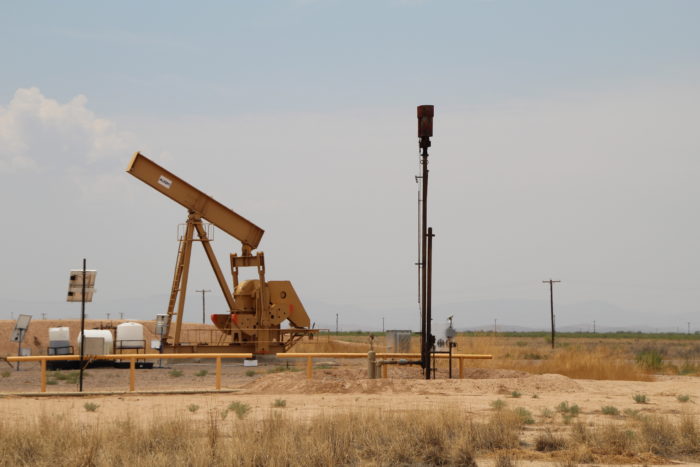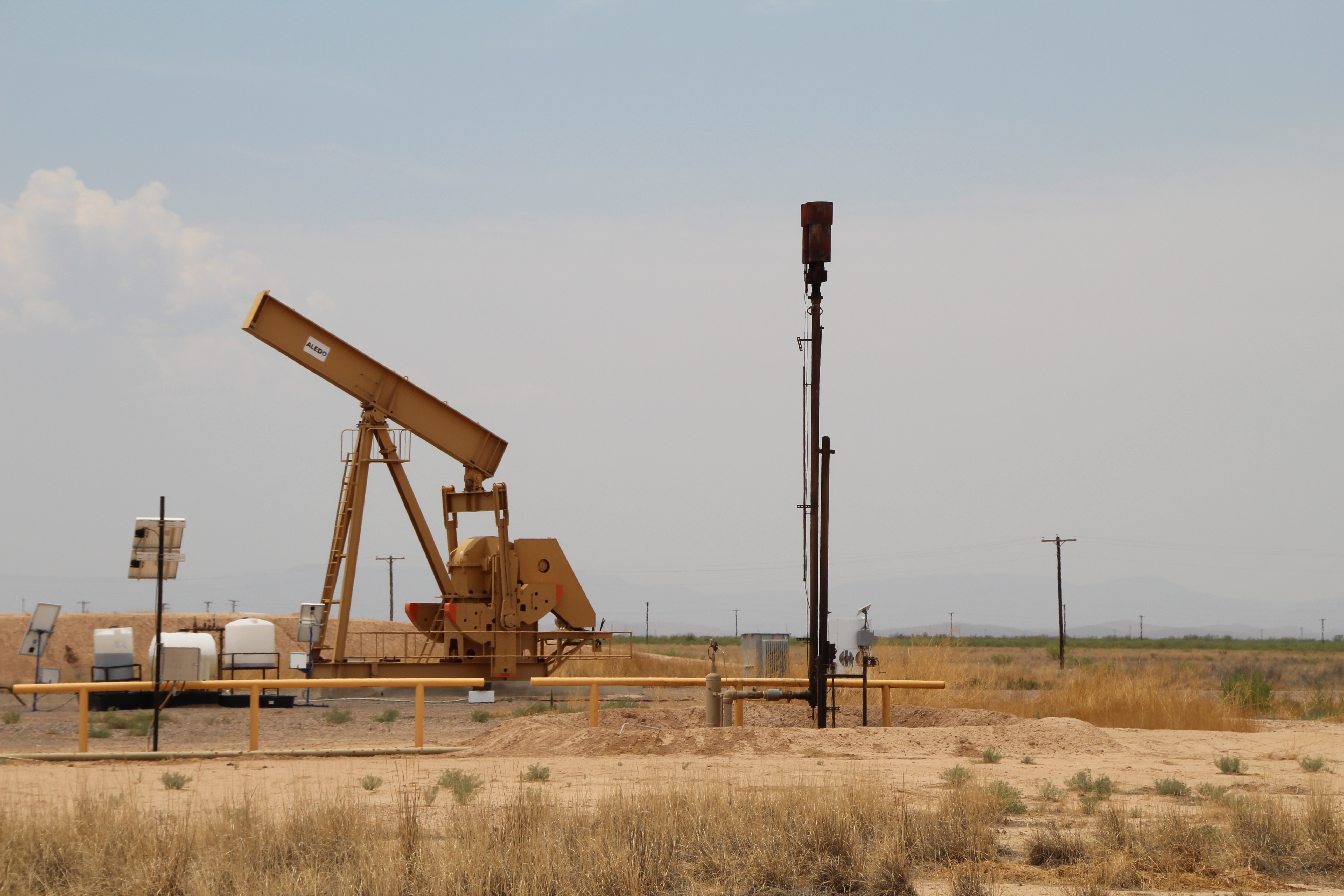This case study was written by Lorne Stockman, Senior Research Analyst at Oil Change International for our latest bank report card, Banking on Climate Change: Fossil Fuel Finance Report Card 2019, with additional contributions from Molly Dunton (Earthworks) and Bryan Parras (Sierra Club).

Hydraulic fracturing (fracking) — injecting high-pressure fluids into shale rock in order to force out oil and gas — provides access to hundreds of billions of barrels of oil and many trillions of cubic feet of fossil gas. These previously inaccessible hydrocarbons are flooding global markets at precisely the time that global emissions from oil and gas should be going into reverse. Put simply, the fracking boom may pose the largest threat to climate progress in the world today.1
The Permian Basin in Texas and New Mexico is currently the epicenter of this global surge of oil and gas production. No other geological basin has so much potential for production growth and therefore so much potential to fuel additional climate pollution.2 Projections suggest that oil production, including production of fossil gas liquids (hydrocarbons such as ethane, propane, and butane, used for heating and cooking and as feedstock for the petrochemical and plastics industry) could grow from 4.7 million barrels per day to nearly 12 million barrels per day by 20303. Gas, which in the Permian Basin is mostly produced as a byproduct and is currently flared at unprecedented rates, is projected to see a 130 percent increase in production over the same period.4
As U.S. Gulf Coast refineries are already saturated with the light oil produced domestically, and the U.S. fossil gas market is also well supplied, most of this production growth is destined for global markets.5
Fracking has upended global markets for oil and gas, lowering prices and undercutting efforts to reduce global demand.6 While some may view this as positive for the global economy in the short term, the long-term implications are disturbing. With few if any regulatory controls on fracking in place in North America or elsewhere, its continued expansion could unleash a flood of cheap oil and gas for several decades to come, threatening the clean energy transition we need to make in order to tackle the climate crisis — while at the same time putting the health of surrounding communities at risk.
Levels of volatile organic compound pollution in the Permian were six times higher in 2014 than in 2011, before the onset of the fracking boom, while levels of benzene emissions were a startling 680 percent higher.7
In one example of the fracking boom’s impact on community health, in Reeves County, Texas, Sue and Jim Franklin used to enjoy the fresh air and mountain views of their home outside Balmorhea. Now, with fracked oil and gas wells just half a mile from their house, they suffer from nosebleeds, headaches, and difficulty breathing. A sign reading “Caution Poison Gas” warns of winds that often blow pollution directly onto their property. The nearby mountains are no longer visible due to the smog.8

Jim and Sue’s story is just one of many across the Permian and beyond of people suffering impacts to their health and environments due to the fracking boom. And this is not where fracking’s impacts end: earthquakes of a certain intensity tripled in West Texas and eastern New Mexico last year, ‘man camps’ bring in drug use and crime, and fracking uses an immense amount of water, in turn threatening water access for others in this semi-arid region.9
The fracking companies listed in the 2019 fossil fuel finance report card are projected to produce the most fracked oil and gas through 2050, on top of their current production. Financing this reckless expansion of the oil and gas industry is financing one of the biggest threats to climate progress today, at the expense of the communities living atop these oil and gas reserves.
“West Texas continues to be extracted by the boom and bust economy of fossil fuels, with short term gains for polluters and generational losses for local communities.”
— Bryan Parras, Beyond Dirty Fuels Gulf Coast Organizer, Sierra Club
Who’s Banking Fracking in the Permian Basin?
EOG Resources, EQT Corporation, Pioneer Natural Resources, and Concho Resources are the top pure-play fracking companies active in the Permian. This chart shows the banks that, since the Paris Agreement, have led deals for at least three of the four top frackers.10
| EOG Resources | EQT Corporation | Pioneer Natural Resources | Concho Resources | |
| Wells Fargo | X | X | X | X |
| JPMorgan Chase | X | X | X | X |
| Bank of America | X | X | X | |
| Barclays | X | X | X | |
| Citi | X | X | X | |
| Goldman Sachs | X | X | X | |
| MUFG | X | X | X | |
| RBC | X | X | X |
- For more on why gas is not a climate solution, see Greig Muttitt and Lorne Stockman, “Burning the Gas ‘Bridge Fuel’ Myth,” Oil Change International, November 2017.
- Kelly Trout and Lorne Stockman, “Drilling Towards Disaster: Why U.S. Oil and Gas Expansion Is Incompatible With Climate Limits,” Oil Change International, January 2019.
- Rystad Energy AS (December 2018). Data from the Ucube database.
- “Rystad Energy, Permian Gas Flaring Hits All-time Highs,” Oil & Gas Journal, 4 December 2018.
- Sandy Fielden, “Pipeline Plans Suggest Tsunami of Crude Exports,” Morningstar Commodities Research, January 2019.
- Mohammed Sergie, “Gas Demand to Get Boost As Supply Surge Sends Prices Lower,” Bloomberg News, 14 December 2017; David Shephard and Ed Crooks, “Opec: Why Trump Has Saudi Arabia Over a Barrel,” The Financial Times, 4 December 2018.
- Oil and gas production data from “2011 National Emissions Inventory (NEI) Data,” U.S. Environmental Protection Agency, 2011 and “2014 National Emissions Inventory (NEI) Data,” U.S. Environmental Protection Agency, 2014. Cited in Lesley Fleischman et al., “Country Living, Dirty Air: Oil and Gas Pollution in Rural America,” EarthWorks, July 2018.
- Ibid.
- Sally Beauvais, “West Texas Wonders: Faulting and Fracking: Exploring the History of Earthquakes in West Texas,” Marfa Public Radio, 27 December 2018; Justin Worland, “How an Oil Boom in West Texas Is Reshaping the World,” Time, 3 January 2019; Rye Druzin, “Water Use Skyrockets in Oil and Gas Drilling in West Texas’ Permian Basin,” San Antonio Express-News, 20 August 2018.
- Bloomberg Finance L.P. and the data researched for this report, January 2019. This subset of the fracking financing data aggregates bank financing for these four companies, adjusted down by the proportion of fracking in the activities of each company named on a given transaction.
